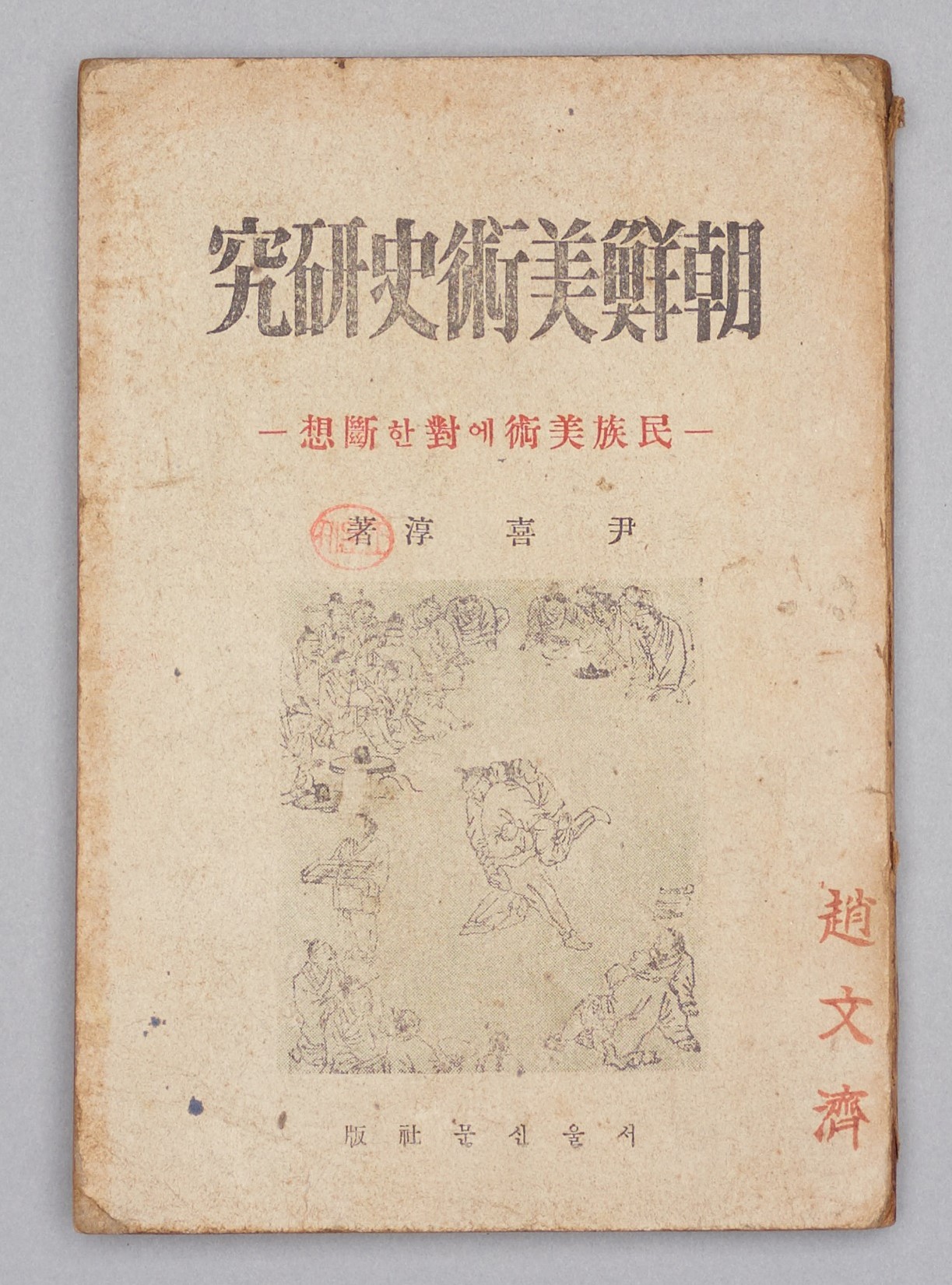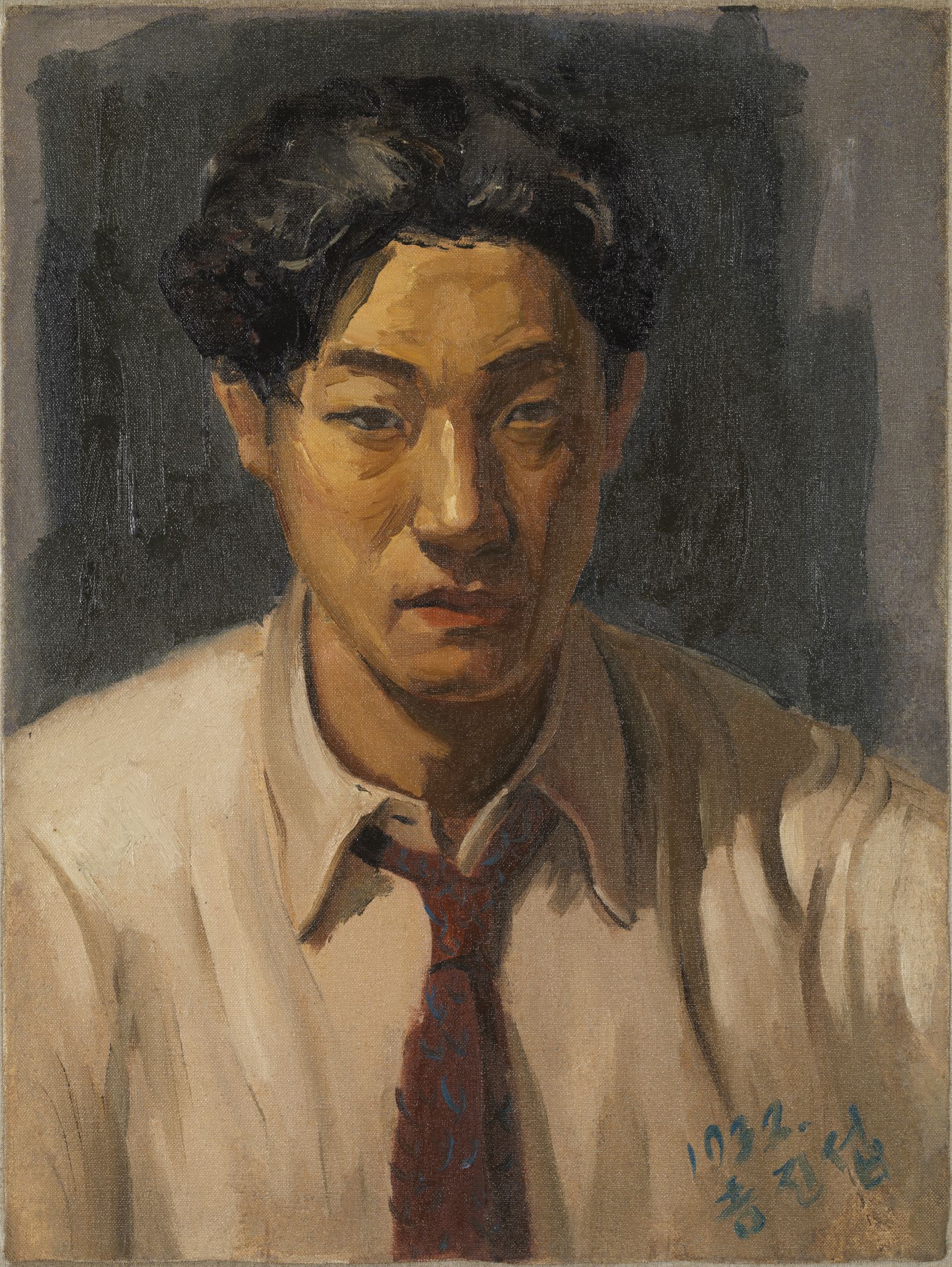
Korean Artists Federation, Korean Plastic Arts Federation, and Korean Sculptors Association Hold a Joint Exhibition to Celebrate Independence,” The Hyun Dai Ilbo, July 31, 1946, 2, column 9
Korean Art Alliance
* Source: Multilingual Glossary of Korean Art by Korea Arts Management Service
Related
-

Korean Plastic Arts Federation
An organization formed in 1946 by numerous established artists. The core membership included Jeong Hyeonung, Gil Jinseop, Kim Kichang, Kim Man-hyeong, Lee Qoede, and Yoon Hee-soon, who left the Korean Art Association (Joseon misul hyeophoe) because of their opposition to the right-wing beliefs of Ko Huidong. The association was the parent organization of the Independent Art Association, Dangu Art Academy, Cheongahoe, Joseon Sculptors Association, and Korean Craftspersons Association (Joseon gongyega hyeophoe). The alliance held exhibitions and published bulletins, but about eight months after its establishment, it merged with the Korean Artist Federation (Joseon misulga dongmaeng) to form the Korean Art Alliance (Joseon misul dongmaeng). The Korean Plastic Arts Federation (Joseon johyeong yesul dongmaeng) was a rare politically moderate organization that accepted many artists in a national art community that was sharply divided along right-wing and left-wing divisions.
-

Korean Artist Federation
An organization formed in February 1946 under the leadership of Kim Jukyung, Lee Insung, and Oh Chiho, who had recently left the Korean Art Association (Joseon misul hyeophoe). Additionally, numerous members of the Korean Art Alliance (Joseon misul dongmaeng) also joined the organization. The president of the Korean Art Association, Ko Huidong, became a member of the Citizens Emergency Council, a group closely aligned with Rhee Syngman, despite his claims to political neutrality. This drew criticism from the artists of the Korean Artists Association and provided the impetus for the establishment of the Korean Artist Federation (Joseon misulga dongmaeng). The governing body was the Central Executive Committee, which oversaw seven departments: the Painting Department, Art Critique Department, Children’s Art Department, Art Education Department, Performing Arts Department, Sculpture Department, and Crafts Department. The organization followed a five-point doctrine: First, eliminate the remnant influences of the Japanese Empire; second, reject all nationalistic and decadent artistic trends; third, establish a new movement of national art; fourth, form a partnership with the international art community; and fifth, attempt to achieve enlightenment of the general population through art and the education of future artists. The inaugural exhibition was from June 24 to June 31, 1946, at the Hwasin Gallery. In addition to exhibitions, the group also engaged in the production of promotional art, such as posters for the Democratic People’s Front.
-

Cultural Exhibition in Commemoration of Korean Liberation
The Cultural Exhibition in Commemoration of Korean Liberation was held from August 12 through 17, 1946 at the Dong Hwa Gallery with the participation of twenty-four organizations under the Korea Federation of Cultural Organizations [Joseon munhwa danche chong yeonmaeng] in celebration of Korea’s independence on August 15, 1945. It was designed to showcase the competence of Korean culture by comprehensively staging the seven fields of art including literature, theater, films, Gugak, posters, comics, and art. This exhibition chronicled a vivid cultural history that demonstrates how Korean culture had survived the Japanese policy of ethnic eradication and how Korea had built a democratic national culture by fighting against Japanese influence and feudalism deeply ingrained in Korea since its independence. Shedding light on various fields, the exhibition became popular for displaying rarely seen documents, such as posthumous works by deceased artists. It was a success to the point that more than 7,000 people visited on the opening day and the total number of visitors over five days exceeded 50,000. After its closing on August 17, the Joint Art Exhibition was held as a part of the Cultural Exhibition in Commemoration of Korean Liberation by three organizations, the Korean Plastic Arts Federation [Joseon johyeong yesul dongmaeng], the Korean Artist Federation [Joseon misulga dongmaeng], and the Korean Sculptors Association [Joseon jogakga hyeophoe]. This exhibition, held from August 20 through 27, 1946, featured more than sixty works by mid-career and emerging artists who had made advance strides within a year after liberation. Held in celebration of the first anniversary of Korea’s liberation from Japan, the Cultural Exhibition in Commemoration of Korean Liberation is significant in that it comprehensively presented the efforts made by several organizations affiliated with the Korea Federation of Cultural Organizations in a variety of fields to build national culture.
Find More
-

Lee Insung
Lee Insung (1912-1950) was born in Daegu as the second son in a working class family. He graduated Suchang Elemantary School in 1928 and studied water painting at Seo Dongjin’s Daegu Art Studio. He joined a local art group, Hyangtohoe Association, from 1930 to 1934. He was first selected for the eighth Joseon Art Exhibition [Joseon misul jeollamhoe] when he was 17 years old, followed by consecutive special selections from the tenth to fifteenth exhibitions. He won a Changdeokgung Palace award in 1935 and became a Noteworthy Artist in 1937. He moved to Japan in 1931 to attend evening classes at the Taiheiyo Art School and rigorously focused on developing his art. After independence, he worked as an art teacher at Ewha Womans Middle School in 1945 and was a judge of Western painting at the first National Art Exhibition (Gukjeon) in 1949. He died in an accident during the Korean war in 1950. His work often featured vibrant color and free lines, and a creative structure. He pioneered a new style of art that featured the local color of Korea in original new ways.
-

Yoon Hee-soon
Yoon Hee-soon (1902-1947, pen name Beomyi) was born in Seoul and attended Whimoon High School and Gyeongseong Teachers College. He independently studied oil painting while he was working as an elementary school teacher. His works were selected for the sixth Joseon Art Exhibition in 1927. In 1932, he drew newspaper cartoons at Maeil Ilbo and became a member of the Association of Calligraphy and Painting [Seohwa Misulhoe]. As a painter, he tried a realistic painting style for figures and still objects, but none of these works have survived. He was also active as an art critic. His 1932 essay “Current Problems of Joseon Art” criticized artists who pursued Japanese painting style or an interest in local colors and proposed a new path for Joseon Art. He published a book, Studies on Joseon Art (1946), that described the art history of Joseon (Korea) from a realistic critical perspective. He led a radical national art movement after being selected as a president of the Korean Plastic Arts Federation [Joseon johyeong yesul dongmaeng]. He died of tuberculosis in 1947.
-

Gil Jinseop
Gil Jinseop (1907-1975) was born in Pyongyang, the son of pastor Gil Seonju of Pyongyang's Jangdaehyeon Church. His father was one of the 33 national delegates of the Mach First Independence Movement. In South Korea, it is considered that he died in 1975, but the North Korean Human geography indicates that he died in 1974. While at Soongsil High school, his painting Landscape was selected for the 1925 Joseon Art Exhibition [Joseon misul jeollamhoe]. Another work of his was selected for the Joseon Art Exhibition while he studied at the department of Western Painting in Tokyo School of Fine Arts. Later, he held a solo exhibition at the Pyongyang Commercial Art Gallery. After graduating from Tokyo School of Fine Arts in 1932, he started to actively participate in Mogilhoe Association, the White Savages Group, and the Yanghwa Art Coterie Exhibition. His style emphasized speedy and light lines, bright and vivid color sense, and margin and matiere. After Independence, he taught as a professor at the Fine Arts College, Seoul National University until April 1947. He was appointed as a leader of the Korean Art Construction Headquarters [Joseon misul geonseol bonbu], a vice-president of the Korean Plastic Arts Federation [Joseon johyeong yesul dongmaeng], and a head of Seoul branch of the Korean Artist Federation [Joseon misulga dongmaeng]. He moved back to North Korea after being appointed as a first representative of the Supreme People’s Assembly in August 1947. In later life he served as a faculty member at the Pyongyang Art School and a vice president of the Korean Artist Federation [Joseon misulga dongmaeng].






